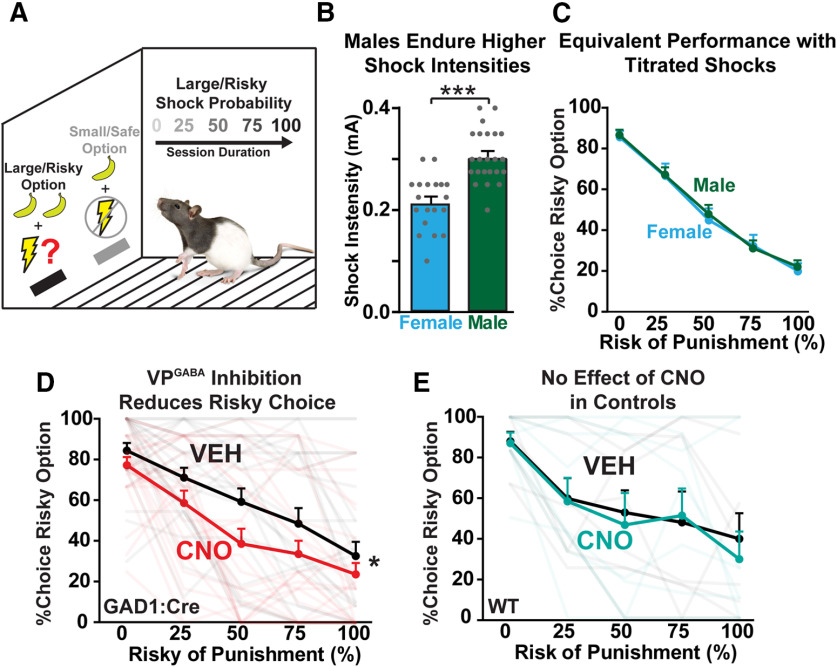Figure 2.
Inhibiting VPGABA neurons reduces risky choice. A, Schematic of risky decision task modified from Simon et al. (2009). Sessions consisted of forced choice trials (1 available option; small/safe or large/risky) and free choice trials (2 available options; small/safe and large/risky), with ascending footshock probability associated with selection of the large/risky reward option. B, Male rats required a higher shock intensity than females for appropriate performance of the risky decision task, as previously reported (Orsini et al., 2016). C, Equivalent average performance of male and female rats on the risky decision task with shock titration. D, GAD1:Cre rats administered CNO (red line) exhibit a decrease in %choice of the risky option relative to vehicle-treated rats (black line). E, No effect of CNO (teal line) in WT rats compared with vehicle treatment (black line). ***p < 0.0001 (independent-sample t test). *p < 0.05, treatment main effect. Semitransparent lines indicate data from individual rats tested with CNO (red/teal) or vehicle (black). Data are mean ± SEM.

